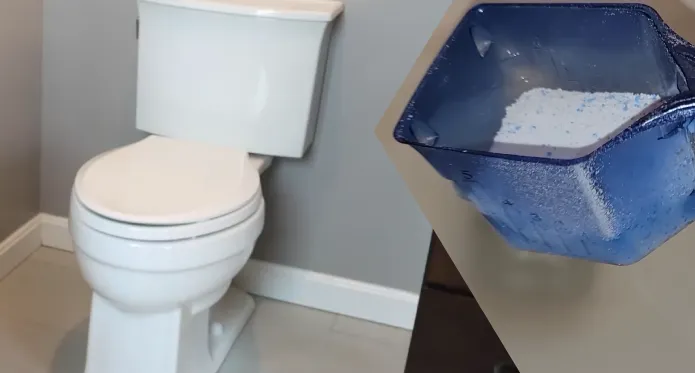Last Updated on November 14, 2023
An unenjoyable necessity, cleaning the toilet is a must for keeping your home looking and smelling fresh.
Wondering if you can use bleach to tackle toilet duty? Absolutely yes, and it’s one of the best solutions out there.
Bleach has powerful disinfecting properties that can quickly and easily remove dirt and grime from a toilet bowl. But before you start bleaching your bathroom, you should understand how much bleach to use and how long bleach should stay in the toilet.
So, keep your toilet from becoming a breeding ground for bacteria by learning the proper steps of using bleach to keep it sparkling. We will explain what you need to know about working with this powerful cleaning agent, from benefits and risks to proper use.
How Can You Clean a Toilet With Bleach Solution?
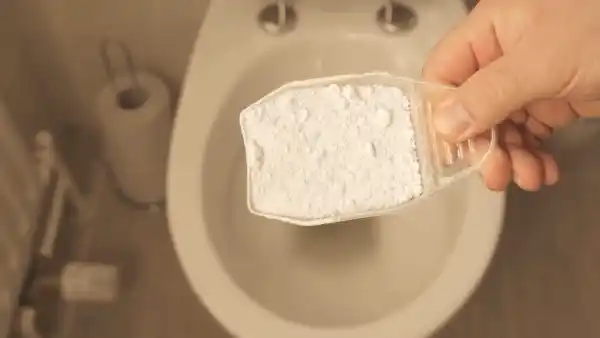
Cleaning a toilet with bleach (such as Clorox toilet bowl cleaner) is an effective and inexpensive way to keep your home’s bathrooms clean and hygienic. Bleach is a strong disinfectant, making it especially useful for cleaning tough stains and eliminating odors in the bathroom.
Here’s how to use bleach safely and effectively on your toilet:
Step 1. Prepare the Area:
Before beginning the cleaning process, you have to prepare the area around the toilet properly. The area must be cleared of any items or objects that could be damaged by bleach or block access to hard-to-reach areas.
Removing any rugs or mats from the floor nearby is also essential to ensure no bleach solution touches them during the cleaning process. Also, all surfaces nearby should be covered with plastic sheeting or newspaper as an extra precaution.

Step 2. Apply Bleach Cleaning Solution:
Once you’re ready to begin cleaning, pour ½ cup of undiluted bleach directly into your toilet bowl. Make sure not to mix it with other products, as this can create dangerous fumes or cause skin irritation when exposed for too long.
When using bleach, try to avoid splashing it on yourself because this kind of contact could cause skin irritation.
You can also create your bleach solution by mixing ½ cup with 1 gallon of water in a large bucket or container to clean toilet bowl surfaces. Make sure to mix these ingredients thoroughly before starting to clean them.
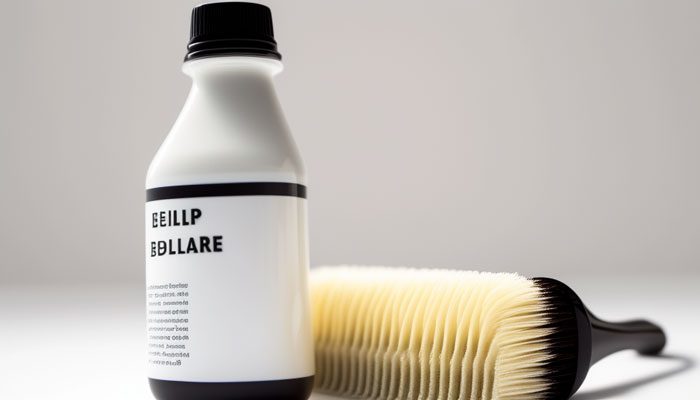
Make sure not to use too much bleach, as this can damage surfaces. After you’ve prepared your cleaning solution, use a scrub brush or cloth soaked in it to liberally apply it to all surfaces of your toilet, including the inside, outside, rim, bowl, and underneath if possible.
Step 3. Let it Sit for Several Minutes:
After applying the bleach solution all around your toilet and toilet bowl, leave it sitting for approximately 6 minutes so that its powerful disinfecting properties can take effect effectively.
During this time, you may see some bubbling action caused by oxidation occurring on surfaces where microorganisms are present. This is perfectly normal when using bleach solutions for sanitizing purposes.
You should turn on the exhaust fan and leave the bathroom during this time if you are worried about toxic fumes.
Step 4. Scrub Thoroughly with Toilet Brush:
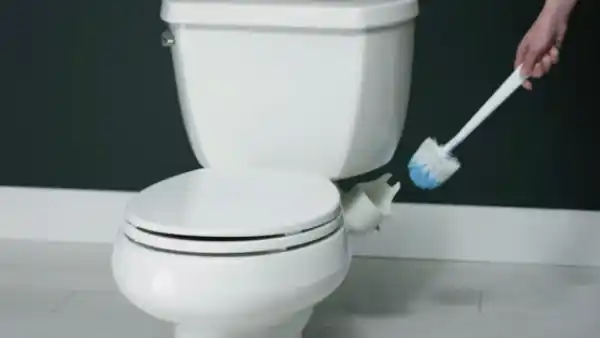
After 6 minutes have elapsed, scrub the bowl thoroughly to remove dirt and bacteria. Begin by putting on rubber gloves and using a toilet brush to scrub the insides of the bowl, around the rim, and under the rim. Make sure to get all the nooks and crannies for maximum cleanliness.
You can also use a damp cloth soaked in freshwater (even better, distilled water) to rinse off all outer surfaces thoroughly until no more clean traces remain visible.
Step 5. Flush & Wipe Down Exterior Surfaces:
After allowing the bleach to work its magic inside the bowl, flush away any excess bleach that may remain to prevent staining or discoloration of your porcelain fixture over time.
Next, take a damp cloth or sponge and wipe down all external surfaces of your toilet, such as the tank lid, handle, base, seat, etc., ensuring you reach every corner while removing any grime build-up and disinfecting it at the same time. Rinse all remaining residue with warm water before moving on to the next step.
Step 6. Disinfect & Deodorize External Parts:
Now that you’ve cleaned all visible parts of your toilet, it is time to disinfect external components with a diluted bleach solution, such as the flush handle, seat hinges, and seat bolts.
This will ensure that no bacteria remain present, which could otherwise lead to contamination or an unpleasant smell in your bathroom. In addition to this step, it is also worth investing in a deodorizer designed explicitly for toilets which will keep them smelling fresh between deep cleans.
How Much Bleach Should You Use to Clean a Toilet Bowl?
To clean a toilet bowl with bleach, it is recommended to use approximately ½ cup of undiluted bleach. Be sure not to exceed the recommended amount, as this can damage your toilet’s porcelain surface.
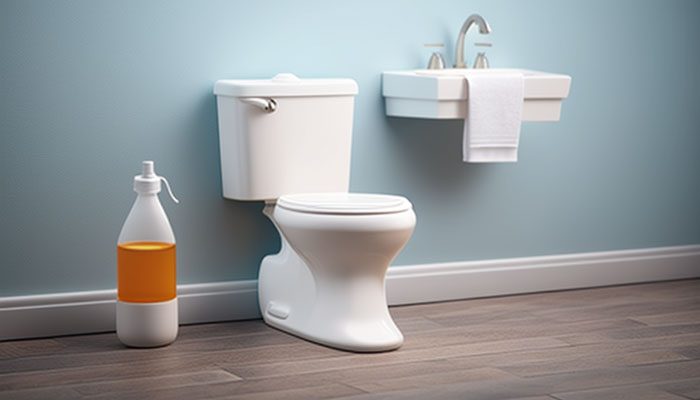
Also, ensure the bleach used is specifically designed for cleaning toilets and not another type of bleach, such as laundry or dishwasher. Furthermore, ensure that any cleaning products in the vicinity are disposed of correctly and away from children and pets.
What is the Recommended Time Limit for Leaving Bleach in the Toilet?
Bleach should remain in the toilet for around 6 minutes before flushing it away. This allows time for the bleach to penetrate any dirt or debris that may have accumulated on surfaces within the bowl, effectively killing germs and bacteria which could cause odors or health issues.
It is important to note that leaving bleach in a toilet for too long can result in discoloration of certain surfaces, so it is best to stick with the recommended period and rinse thoroughly after use.
How Often Should You Bleach Your Toilet?
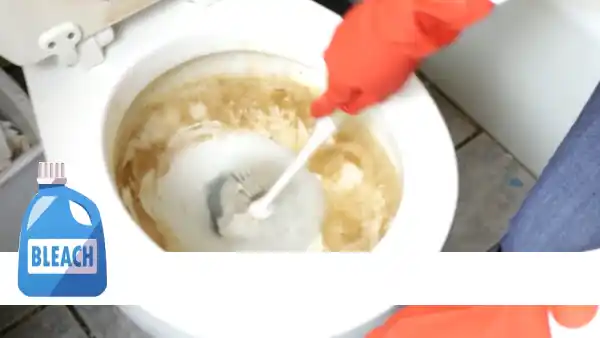
You are typically advised to clean your toilet with bleach at least once weekly. This will help keep your bathroom free from germs and bacteria that could cause hygiene issues or other health hazards.
Plus, regularly cleaning your bathroom will ensure that any potential problems are addressed before they become more serious. Regularly cleaning with an appropriate toilet bowl cleaner can also help extend the life of your toilet by preventing build-up, which may lead to damage over time.
Advantages and Disadvantages of Using Bleach to Clean a Toilet
Using bleach as a cleaning solution for your toilet can effectively keep your bathroom sparkling, and it is a fairly common practice, but it does have its pros and cons:
Advantages:
1. Bleach is one of the most effective methods for killing germs, bacteria, and viruses in a bathroom environment.
2. Many people choose bleach because it is easy to obtain from most stores or online retailers at an affordable price.
3. Using bleach as a part of your regular toilet cleaning routine will help prevent the spread of infections, illnesses, or diseases that could otherwise occur when surfaces are unclean or contaminated with germs and bacteria.
4. It is powerful enough to eliminate tough stains and mildew build-up, making it ideal for keeping toilets clean.
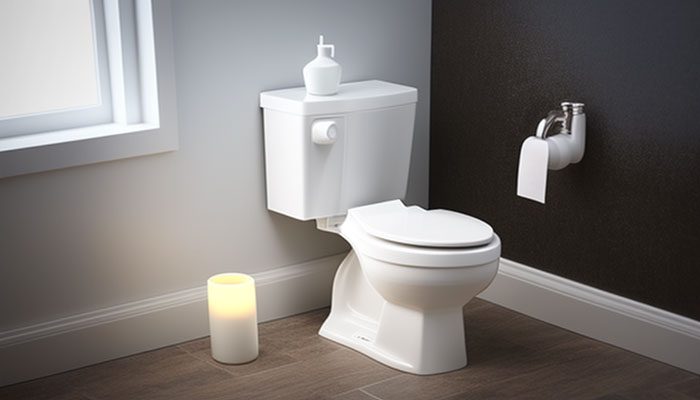
Disadvantages:
1. Bleach can irritate skin, eyes, and lungs if misused or without protective gear, such as gloves and masks. When using it in a confined space such as a bathroom, it’s vital to ensure adequate ventilation throughout the area to reduce these risks further.
2. When using bleach regularly on toilets, there is always the chance that it will corrode certain parts of the plumbing system over time, such as rubber seals or pipes made from plastic or other weak materials that are not resistant to chlorine-based products like bleach.
3. Using too much bleach can leave behind unpleasant.
4. Bleach should never be mixed with ammonia-based cleaners as this may create toxic fumes that are dangerous to inhale, even in small amounts over time, when present in enclosed spaces such as bathrooms.
Safety Considerations When Using Bleach to Clean a Toilet
Bleach is a powerful chemical compound of sodium hypochlorite that can clean and disinfect toilets, but you must exercise caution when handling bleach. Here are some toilet cleaning safety tips bleach:
1. Wear protective gear: When cleaning a toilet with bleach, wear rubber gloves and safety goggles to protect your hands, face, and eyes from the strong chemicals in the solution. It’s also recommended that you wear long sleeves and pants and a respirator mask if you’re in an area with poor ventilation.
2. Don’t mix bleach with ammonia or other acids: Ammonia and other acids, such as vinegar, can create dangerous fumes when mixed with chlorine-based products like bleach. Inhaling these fumes can irritate the eyes, throat, nose, and lungs.
3. Always dilute the bleach concentration: Bleach should always be diluted before use to reduce its strength without compromising its effectiveness at killing bacteria and germs on surfaces. Never use undiluted bleach on any dry surface, as this could cause surface damage.
4. Rinse the surface thoroughly afterward: After cleaning the toilet with a bleach solution, rinse off all traces of the chemical from the surfaces by flushing several times with clean water to prevent skin irritation if touched afterward by anyone using the restroom.
5. Use appropriate storage containers: Bleach should always be stored in airtight containers when not in use to prevent accidental spillage onto surfaces that could lead to skin or eye irritation if touched directly.
Does Bleach Damage Toilet Bowls?
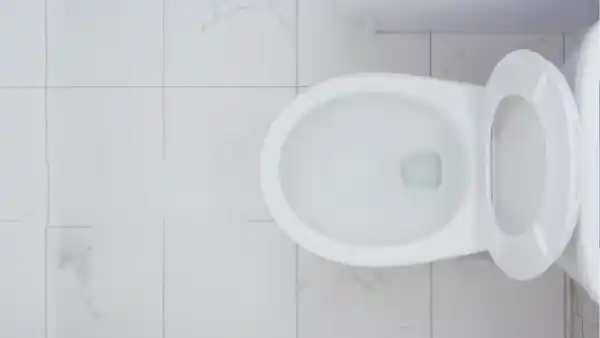
No, bleach does not damage toilet bowls. It is an ordinary household toilet cleaner used to keep toilets clean and disinfected. Bleach is safe for porcelain and fireclay toilets. It can be used to remove stains and help whiten the bowl.
But, it should be used with caution as too much chlorine bleach can cause damage to some surfaces. It is also important to rinse the area thoroughly after using bleach to avoid any potential damage or discoloration of the surface.
Should You Bleach Badly Stained Toilet Bowls?
Yes, bleach can be an effective way to remove stubborn stains from your toilet bowl. The best approach for cleaning a badly stained bowl is to start by scrubbing the affected area with a nylon brush and then adding a half cup of bleach in one gallon of warm water.
Allow the solution to sit for at least 10 minutes, then scrub the stained area with a brush before rinsing thoroughly with cold water. If you have hard water deposits, you may need to repeat this process several times until all stains are removed.
Does Bleach Affect Different Types of Toilets?
Yes, bleach affects different types of toilets depending on their material composition. For example, bleaching porcelain toilets will generally result in no visible change while plastic or enameled steel surfaces may become discolored if too much chlorine bleach is used or if it is allowed to sit too long.
So, you must always use a diluted solution when cleaning these materials and that you rinse off all residue thoroughly afterward to prevent any potential damage from being done.
Banish Toilet Dirt and Germs in a Flash With the Power of Bleach
To keep your toilet spotless and sparkling, bleach can be a tremendous germ-busting weapon, but it comes with its unique set of safety precautions. Ensure you know the risks before wielding these powerful cleaning chemicals in your bathroom.
Make sure you’re getting the most bang for your bleach buck. Time it right and use it just enough to reap its powerful disinfecting benefits. It’s a delicate balancing act between safety, efficiency, and effectiveness, but we’ve covered this.
With this knowledge, you can ensure that your bathroom stays sparkling clean without causing unnecessary damage or harm.

